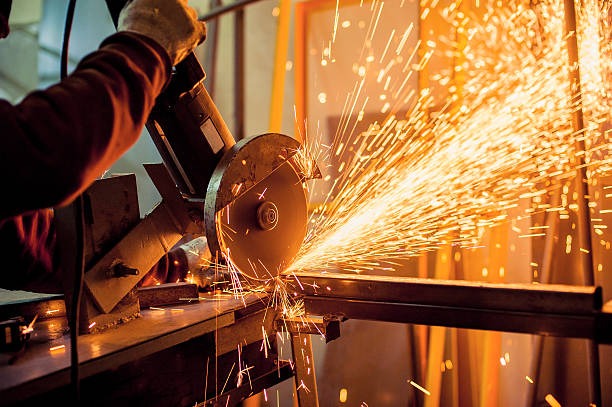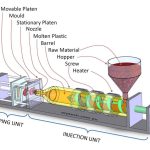Metal cutting is a fundamental process in manufacturing that involves removing material from a metal workpiece to achieve desired shapes, sizes, and finishes. This process is essential in industries such as automotive, aerospace, construction, and electronics. Three of the most common metal cutting techniques are turning, milling, and drilling. Each method has unique characteristics, tools, and applications. In this article, we’ll explore the science behind these processes, their tools, and best practices for optimal results.
1. The Science of Metal Cutting 🧠💡
At its core, metal cutting involves applying force to shear material from a workpiece, creating chips that are removed from the surface. The effectiveness of this process depends on factors such as cutting speed, feed rate, depth of cut, and tool material. Heat, friction, and mechanical stress play critical roles, influencing tool wear, surface finish, and dimensional accuracy.
Key Concepts:
- Shear Deformation: Metal is removed by shearing, where a cutting tool applies force that exceeds the material’s shear strength.
- Chip Formation: The material is displaced as chips, whose shape and size depend on cutting parameters and tool geometry.
- Heat Generation: Cutting generates heat due to friction and plastic deformation, impacting tool life and workpiece quality.
2. Turning: Shaping Metal with Precision 🔄🗜️
Definition:
Turning is a machining process where a cutting tool removes material from a rotating cylindrical workpiece. This process is commonly performed on a lathe and is used to create parts with rotational symmetry, such as shafts, bolts, and bushings.
How It Works:
- The workpiece rotates at high speed, while the cutting tool moves along its surface to remove material.
- The tool’s feed rate, depth of cut, and spindle speed determine the material removal rate and surface finish.
Tools Used:
- Single-Point Cutting Tools: Made from materials like high-speed steel (HSS), carbide, or ceramic.
- Lathe Machine: Includes components such as the headstock, tailstock, carriage, and tool post.
Types of Turning:
- Facing: Removing material from the end of the workpiece to create a flat surface.
- Straight Turning: Reducing the diameter of the workpiece along its length.
- Taper Turning: Creating a conical shape by gradually changing the diameter.
- Threading: Cutting screw threads into the workpiece.
3. Milling: Versatile Cutting for Complex Shapes 🏗️🛠️
Definition:
Milling is a machining process that uses rotating multi-point cutting tools to remove material from a stationary workpiece. This method is highly versatile, allowing for the creation of flat surfaces, slots, grooves, and complex 3D shapes.
How It Works:
- The cutting tool rotates at high speed, while the workpiece is clamped to a table that moves in multiple directions (X, Y, and Z axes).
- Material is removed as the tool moves across the workpiece, with each cutting edge removing a small amount of material.
Tools Used:
- Milling Cutters: Available in various shapes, such as end mills, face mills, and ball nose cutters.
- Milling Machine: Can be vertical or horizontal, with CNC (Computer Numerical Control) machines offering advanced automation and precision.
Types of Milling:
- Face Milling: Produces flat surfaces using a cutter with multiple teeth.
- Peripheral Milling: Cuts along the workpiece’s edges to shape its profile.
- Slot Milling: Creates slots and grooves using specialized cutters.
- Pocket Milling: Removes material from within a confined area, often for cavities and pockets.
4. Drilling: Creating Precise Holes in Metal 🕳️🔩
Definition:
Drilling is a process that uses a rotating drill bit to create cylindrical holes in a workpiece. This operation is essential for creating holes for fasteners, wiring, and fluid flow in metal components.
How It Works:
- The drill bit rotates at high speed, applying axial force to penetrate the material and remove chips.
- Coolant is often used to reduce heat and friction, prolonging tool life and improving hole quality.
Tools Used:
- Drill Bits: Made from HSS, carbide, or cobalt, with designs such as twist drills, center drills, and step drills.
- Drill Press: A machine that holds the drill bit and applies consistent force for precise hole-making.
Types of Drilling:
- Spot Drilling: Creates a small indentation to guide the drill bit and prevent wandering.
- Through Drilling: Produces holes that pass completely through the workpiece.
- Blind Drilling: Creates holes that do not fully penetrate the material.
- Counterboring and Countersinking: Enlarges hole openings for fastener heads or other components.
5. Factors Affecting Metal Cutting Performance ⚡🔥
Several factors influence the efficiency and quality of metal cutting processes:
- Cutting Speed: Faster speeds improve productivity but generate more heat, affecting tool life.
- Feed Rate: Higher feed rates remove material quickly but may reduce surface finish quality.
- Depth of Cut: Deeper cuts remove more material per pass but require more force and generate more heat.
- Tool Material and Geometry: The tool’s material and cutting edge design affect wear resistance, cutting efficiency, and chip formation.
- Coolants and Lubricants: Reduce heat and friction, extending tool life and improving surface finish.
6. Safety and Best Practices 🧤🦺
Metal cutting involves high-speed machinery, sharp tools, and hot metal chips, making safety a top priority:
- Wear Personal Protective Equipment (PPE): Use safety glasses, gloves, and hearing protection.
- Secure Workpieces Properly: Ensure the workpiece is clamped securely to prevent movement during cutting.
- Use Correct Cutting Tools and Parameters: Select tools and settings that match the material and desired finish.
- Maintain Equipment Regularly: Keep machines and tools in good condition to ensure safe and efficient operation.
- Monitor Chip Formation and Heat: Proper chip formation and heat management prevent tool damage and ensure quality cuts.
7. Applications of Metal Cutting 🏭🚗✈️
Metal cutting plays a critical role in various industries, including:
- Automotive: Manufacturing engine components, transmission parts, and chassis structures.
- Aerospace: Producing lightweight, high-strength components for aircraft and spacecraft.
- Construction: Fabricating steel beams, pipes, and structural elements.
- Electronics: Creating precision components for circuit boards and electronic devices.
- Medical: Manufacturing surgical instruments, implants, and prosthetics.
Conclusion ✅
Understanding the science behind metal cutting is essential for producing high-quality components efficiently and cost-effectively. Whether using turning, milling, or drilling, selecting the right tools, cutting parameters, and techniques ensures precise, durable parts with excellent surface finishes. As technology advances, CNC machines and automated systems continue to enhance the accuracy, speed, and versatility of metal cutting processes, driving innovation across countless industries.


